Shortages of medical personnel at community health centers: implications for planned expansion
Abstract
Context The US government is expanding the capacity of community health centers (CHCs) to provide care to underserved populations.
Objective To examine the status of workforce shortages that may limit CHC expansion.
Design and Setting Survey questionnaire of all 846 federally funded US CHCs that directly provide clinical services and are within the 50 states and the District of Columbia, conducted between May and September 2004. Questionnaires were completed by the chief executive officer of each grantee. Information was supplemented by data from the 2003 Bureau of Primary Health Care Uniform Data System and weighted to be nationally representative.
Main Outcome Measures Staffing patterns and vacancies for major clinical disciplines by rural and urban location, use of federal and state recruitment programs, and perceived barriers to recruitment.
Results Overall response rate was 79.3%. Primary care physicians made up 89.4% of physicians working in the CHCs, the majority of whom are family physicians. In rural CHCs, 46% of the direct clinical providers of care were nonphysician clinicians compared with 38.9% in urban CHCs. There were 428 vacant funded full-time equivalents (FTEs) for family physicians and 376 vacant FTEs for registered nurses. There were vacancies for 13.3% of family physician positions, 20.8% of obstetrician/gynecologist positions, and 22.6% of psychiatrist positions. Rural CHCs had a higher proportion of vacancies and longer-term vacancies and reported greater difficulty filling positions compared with urban CHCs. Physician recruitment in CHCs was heavily dependent on National Health Service Corps scholarships, loan repayment programs, and international medical graduates with J-1 visa waivers. Major perceived barriers to recruitment included low salaries and, in rural CHCs, cultural isolation, poor-quality schools and housing, and lack of spousal job opportunities.
Conclusions CHCs face substantial challenges in recruitment of clinical staff, particularly in rural areas. The largest numbers of unfilled positions were for family physicians at a time of declining interest in family medicine among graduating US medical students. The success of the current US national policy to expand CHCs may be challenged by these workforce issues.Residents of the United States lack universal access to health care, and millions of people have difficulty obtaining medical care.1,2 The year 2005 marked the 40th anniversary of one of the nation’s most enduring attempts to remedy this problem: the creation of community health centers (CHCs) as part of the “war on poverty.”3– 8 The national importance of these centers has grown during the ensuing 4 decades, and the federal government provides funding through a variety of categorical mechanisms under the collective term federally qualified health centers. CHCs provide medical, dental, and mental health care for migrant workers, the uninsured, the homeless, and others in need, and the number of people they have served has expanded rapidly in the 21st century.9
The role and responsibility of CHCs have increased as more people in the United States have difficulty gaining access to medical care.10 CHCs now provide care to more than 14 million US residents in more than 3500 communities.9 Governed by nonprofit boards with majority representation from the patient population served, CHCs are different from the private practices and for-profit entities that deliver most ambulatory care in the United States.11
A national decision to invest further in CHCs has occurred during a period when access to health care in the United States is limited for more people than ever before in the country’s history.10,12,13 Ongoing plans include a 5-year initiative that will increase federal spending on CHCs by at least $2.2 billion through fiscal year 2006 and substantially increase the number of treated patients.14– 17
We examined the status of the health care workforce in CHCs in the United States, with particular attention to the types of personnel who are most difficult to recruit and retain. Rural health care delivery systems are smaller and less well staffed than their urban counterparts; 20% of the US population lives in rural areas but only 9% of physicians practice there.18,19 We therefore also examined whether workforce shortages are more acute in rural CHCs and whether rural and urban CHCs differ in their staffing patterns, the source of their clinicians, and their ability to retain clinicians.
Authors:
Rosenblatt RA, Andrilla CHA, Curtin T, Hart LGJournal/Publisher:
JAMAEdition:
Mar 2006. 295(9):1042-1049Link to Article
Access the article here: JAMACitation:
Rosenblatt RA, Andrilla CHA, Curtin T, Hart LG. Shortages Of Medical Personnel At Community Health Centers: Implications For Planned Expansion. JAMA. Mar 2006 295(9):1042-1049Related Studies:
Health Center Expansion and Recruitment Survey: Joint South Carolina Rural Health Research Center and WWAMI Rural Health Research Center Project

